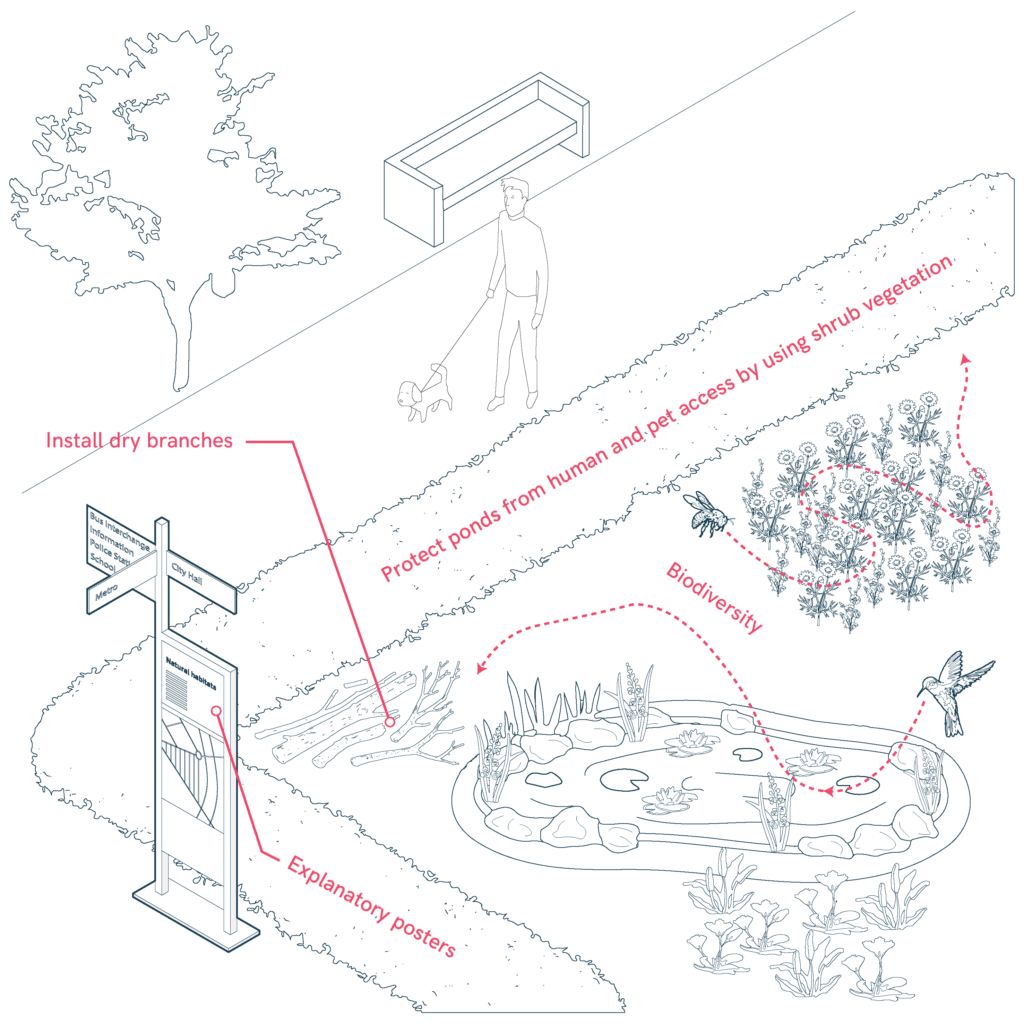Water Management and Ponds
The presence of water in parks, particularly through renaturalized rivers, plays a critical role in preserving habitats for various species, including insects, amphibians, reptiles, and birds, contributing to the overall health and sustainability of park ecosystems. Rivers have often been channeled and interrupted by small dams or impoundments. Renaturalizing these channels is vital for improving biodiversity, as it restores the biological continuity of rivers. This allows for the free movement of sediments, fauna, seeds, and nutrients, which are essential for creating resilient spaces that support diverse ecosystems.

- Eliminate dams and side barriers in rivers to restore natural flow.
- Clear the riverbed of slabs and other artificial obstructions.
- Collaborate with experts to implement a progressive river renaturalization plan, keeping in mind that these processes are complex and require long-term strategies, including regular evaluation and prevention measures.
- Create ponds of varying depths and islands to provide diverse habitats for wildlife.
- Protect ponds from human and pet access by using shrub vegetation of various sizes to reinforce the aquatic ecosystem.
- Install dry branches or create roosting spaces for birds around the ponds to enhance biodiversity.
- Place explanatory posters near water features to promote environmental education and raise awareness about the importance of preserving natural habitats.
